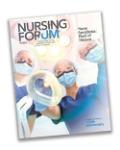Seeking Equal Measures for Elderly Care
October 30, 2019 Libby ZayUMSON nurse researcher finds assisted-living facility regulations vary widely when compared with traditional nursing homes.
SCHOOL OF NURSING RESEARCHER
Alison M. Trinkoff, ScD, MPH, RN, FAAN
Professor
As the Baby Boom generation ages, long-term care facilities are experiencing a boom of their own: The U.S. Census Bureau projects the number of residents to reach 56 million by 2020 and balloon to 74 million by 2030. Instead of entering traditional nursing homes, many relatively healthy older adults are choosing to reside in assisted-living facilities (ALFs), homelike environments that do not typically provide skilled care and rehabilitation.
“The number of nursing home beds is staying relatively stable, but ALFs are really growing,” explains Alison M. Trinkoff, ScD, MPH, RN, FAAN, professor, adding that traditional nursing home care “is based on the medical model, while ALF care is developed out of the social care model. However, most long-term care populations will ultimately require nursing care and socially supportive environments.”
The regulations for ALFs, however, are generally less stringent than those for nursing homes, which are licensed and overseen by the federal government and are rated according to uniform standards.
On the other hand, individual states determine the oversight and training requirements for ALFs, which Trinkoff says is concerning as the number of residents with chronic diseases and cognitive problems living in ALFs increases.
91 percent of older adults have one or more chronic health conditions that may erode their ability
to live independently.
— INSTITUTE ON AGING
“Studies have shown that an RN presence in a nursing home makes a big difference in terms of quality of care, so it stands to reason this would be similar on the ALF side,” says Trinkoff, who has spent 30-plus years as a nurse researcher at UMSON and received grants from the National Council of State Boards of Nursing in 2013 and 2015 for long-term-care-related research projects.
Her latest work, published in Nursing Outlook in June, compiled ALF administrative and regulatory data from across the country and compared it to nursing home data. She found that, overall, ALF regulations varied widely and were less stringent than those of nursing homes in each category they studied: staffing levels, training hours, and regulatory oversight.
“Seeing the data side by side will open up the conversation about why these two sectors are so different,” Trinkoff says, adding that the data could give state-level policymakers the leverage they need to strengthen regulations for ALFs. “People are living longer and better, and there is only going to be more demand for long-term care facilities. Safeguarding residents by ensuring quality care is an important priority.”
INSIDE THE RESEARCH
Trinkoff’s team over the course of these projects has included around a dozen faculty and student researchers, including clinical faculty member Nancy B. Lerner, DNP ’10, MS ’74, BSN ’66, RN, CDONA, associate professor, who has served as the director of a nursing home. “Her insights and experiences really added a lot to the project,” Trinkoff says. “It’s one thing to have the research perspective and see the gaps, but it’s another thing to have the perspective of someone who has been immersed in long-term care leadership who also knows the research literature.”
 This article first appeared in the Fall 2019 issue of Nursing For/um magazine.
This article first appeared in the Fall 2019 issue of Nursing For/um magazine.
Illustration by Carmen Segovia